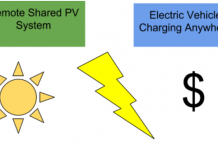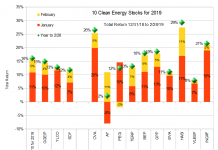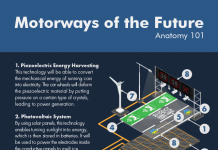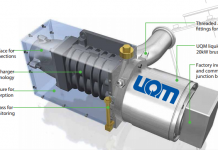John Petersen
This week has been fascinating because of three articles that found their way to my computer. The first was a thematic piece in McKinsey Quarterly titled “Profiting from the low-carbon economy” that included a carbon abatement cost graph which showed full hybrid automobiles (HEVs) offered CO2 abatement savings of roughly $50 per ton while plug-in hybrid automobiles (PHEVs) imposed CO2 abatement costs of roughly $20 per ton, or slightly more than a nuclear power plant. The second was GM’s widely publicized announcement that the Volt would get 230 miles per gallon. The third was a special report from CNNMoney.com titled “Volt vs. Prius: What’s the better deal?“
After reading and thinking about these articles for a few days, I went to work on an Excel spreadsheet to analyze the differences between HEV and PHEV options and reduce them to a simple customer oriented financial analysis. The summary results I share in this article demonstrate once again that the glittering promise of PHEVs is nothing more than post-modern mythology that does not stand up to even basic economic analysis. For readers that take issue with my assumptions and want to test their own theories, a copy of my Excel spreadsheet is available here. The server copy is write protected but you can save it to your system using a different name and check my work at your leisure.
Gas Price Assumptions
Since 1999, the average annual increase in the price of crude oil has been roughly 17.5%. Based on the following graph that I’ve used in other articles, I believe oil prices will stabilize around $80 per barrel later this year and continue to move upward within the price channel until we hit the next inflection point.

The following table shows potential future gasoline prices over the next 10 years based on three scenarios: a 17.5% annual rate of increase like we’ve had for the last decade; a 25% annual rate of increase and a 32.5% annual rate of increase. Any way you look at it, the numbers are incredibly ugly. We cry and complain that gas prices peaked at $4.50 last year. Can you imagine the pain and economic dislocation arising from $12.50 gas prices 10 years out?
| Calendar | 17.5% Annual | 25.0% Annual | 32.5% Annual |
| Year | Gas Price Increase | Gas Price Increase | Gas Price Increase |
| 2010 | $2.94 | $3.13 | $3.31 |
| 2011 | $3.45 | $3.91 | $4.39 |
| 2012 | $4.06 | $4.88 | $5.82 |
| 2013 | $4.77 | $6.10 | $7.71 |
| 2014 | $5.60 | $7.63 | $10.21 |
| 2015 | $6.58 | $9.54 | $13.53 |
| 2016 | $7.73 | $11.92 | $17.92 |
| 2017 | $9.08 | $14.90 | $23.75 |
| 2018 | $10.67 | $18.63 | $31.47 |
| 2019 | $12.54 | $23.28 | $41.70 |
Since the goal of this article is to debunk prevailing PHEV mythology, I’ll assume that oil price increases over the next decade will mirror the 17.5% rate we experienced in the last decade.
Other Key Assumptions
In a recent Instablog titled “Lies, Damned Lies and MPG Claims for the Volt” I criticized GM for claiming 230 mpg for the Volt because any attempt to combine electric vehicle “EV” range with internal combustion engine “ICE” range is meaningless. I also speculated that the easiest way to get to a 230 mpg figure for the Volt was to assume a 46 mile daily commute, a 40 mile EV range, and 30 mpg fuel economy for ICE powered driving. While I found the numbers arbitrary for a public fuel efficiency announcement, they didn’t strike me as inherently unreasonable. So I’ve decided to follow GM’s lead and use the same basic assumptions for this article:
| Daily driving distance | 46 miles |
| Annual driving days | 250 days |
| Annual vacation trips | 1,000 miles |
| Total annual mileage | 12,500 miles |
| Basic ICE fuel economy | 30 mpg |
| Baseline electricity cost | $0.115 kWh |
| Inflation rate for electricity | 4.0% |
| Discount Rate for present value calculations |
7.5% |
| Minimum car ownership period | 5 years |
| Maximum car ownership period | 10 years |
My Baseline Scenario
As a baseline scenario I
started with a $20,000 new car equipped with a standard ICE that would get 30 mpg and use 417 gallons of gasoline per year. A consumer who bought the car for cash, used 417 gallons of gas per year, and sold the car after five years for 35% of his initial purchase price would have an undiscounted total cost of ownership of $21,671 for the five year period. Stretching the ownership period out to 10 years and reducing the resale value to 10% of the purchase price results in an undiscounted total cost of ownership of $46,090. To keep things as simple as possible, I ignored maintenance and assumed all batteries would last for the entire service life.
The HEV Alternatives
I then used the same basic assumptions to calculate the total cost of ownership over five and ten year periods for:
- A $21,000 micro hybrid that would improve fuel economy by 8%;
- A $23,000 mild hybrid that would improve fuel economy by 20%;
- A $26,000 full hybrid that would improve fuel economy by 40%; and
- A $32,500 PHEV (after tax credits) that would offer 40 miles of EV range and 30 mpg fuel economy from its ICE.
The five and ten year total cost of ownership values are summarized in the following table.
| Purchase | 5 Year | Resale | Undiscounted | |
| Price | Fuel Cost | Value | Cost of Ownership | |
| Pure ICE | $20,000 | $8,671 | ($7,000) | $21,671 |
| Micro Hybrid | $21,000 | $7,977 | ($7,350) | $21,627 |
| Mild Hybrid | $23,000 | $6,936 | ($8,050) | $21,886 |
| Full Hybrid | $26,000 | $5,202 | ($9,100) | $22,102 |
| PHEV 40 | $32,500 | $2,598 | ($11,375) | $23,723 |
| Purchase | 10 Year | Resale | Undiscounted | |
| Price | Fuel Cost | Value | Cost of Ownership | |
| Pure ICE | $20,000 | $28,090 | ($2,000) | $46,090 |
| Micro Hybrid | $21,000 | $25,843 | ($2,100) | $44,743 |
| Mild Hybrid | $23,000 | $22,472 | ($2,300) | $43,172 |
| Full Hybrid | $26,000 | $16,854 | ($2,600) | $40,254 |
| PHEV 40 | $32,500 | $6,823 | ($3,250) | $36,073 |
This table is a very simplistic presentation that assumes a buyer will pay cash for his vehicle and doesn’t worry about details like the time value of money. Nevertheless, it shows that a PHEV will represent a 9.5% up-charge for customers who buy with a 5 year ownership horizon and a maximum savings of 21.7% if they buy with a 10 year ownership horizon.
To take the level of sophistication up a notch, the following table calculates the discounted present values of the five and ten year total cost of ownership using an imputed interest rate of 7.5% per year. While it’s easy to argue that a 7.5% discount rate is far too low for an individual’s financial transactions, the table makes it clear that a PHEV will represent a 21.3% up-charge for customers who buy with a 5 year ownership horizon and a 3.4% savings for customers who buy with a 10 year ownership horizon.
| Purchase | 5 Year | Resale | Net Present Value | |
| Price | Fuel Cost | Value | Cost of Ownership | |
| Pure ICE | $20,000 | $6,855 | ($4,876) | $21,979 |
| Micro Hybrid | $21,000 | $6,307 | ($5,120) | $22,187 |
| Mild Hybrid | $23,000 | $5,484 | ($5,607) | $22,877 |
| Full Hybrid | $26,000 | $4,113 | ($6,339) | $23,774 |
| PHEV 40 | $32,500 | $2,076 | ($7,923) | $26,652 |
| Purchase | 10 Year | Resale | Net Present Value | |
| Price | Fuel Cost | Value | Cost of Ownersh ip |
|
| Pure ICE | $20,000 | $17,550 | ($970) | $36,579 |
| Micro Hybrid | $21,000 | $16,146 | ($1,019) | $36,127 |
| Mild Hybrid | $23,000 | $14,040 | ($1,116) | $35,924 |
| Full Hybrid | $26,000 | $10,530 | ($1,262) | $35,268 |
| PHEV 40 | $32,500 | $4,421 | ($1,577) | $35,344 |
Sensitivity Factors
The most critical sensitivity factor for the total cost of ownership calculations is expected future gasoline prices. In general, ultra-rapid escalation of gas prices makes PHEVs increasingly attractive on a net present value basis, but only at the cost of imposing a crushing burden on the global economy.
The second major sensitivity factor is the imputed interest rate used for the present value calculations. As the discount rate approaches credit card rates of 15%, PHEVs become less attractive.
The third major sensitivity factor is battery cost. The current Federal tax credit for electric drive vehicles is the rough equivalent of a $500 per kWh discount on the purchase price of the batteries. For PHEVs to become truly cost-competitve with micro, mild and full hybrid vehicles, the industry will need to shave another 50% off current heavily subsidized price levels. Unless the government decides that it wants to subsidize PHEV battery costs in perpetuity, battery prices will eventually have to fall from $1,000 per kWh to roughly $250 per kWh, which may indeed be possible given another decade of battery chemistry research and manufacturing technology development. Unless and until we see massive reductions in battery costs, however, PHEVs will be little more than vanity purchases for the green elite who can pay big premiums for status symbols.
We’ve all heard the mythology that PHEVs will save users buckets of money by using cheap electricity instead of expensive gasoline. The hard reality is that none of the HEV or PHEV options is a money saver for the consumer. To make matters worse, all of the planned PHEVs will be considerably less convenient and reliable than their less glamorous cousins. While I grew up with the family car and have a difficult time imagining life without one, it may be time for the industrialized world to consider a paradigm shift of the type proposed by Seeking Alpha contributor Bill James in his recent article “Personal Rapid Transit: Preempting the Need for Oil in Urban Transport.”
The days of using any kind of energy to move 3,000 pounds of steel and 200 or 300 pounds of passengers at highway speed are over! We’ve just been avoiding that particular reality because it’s unpleasant.
In a world where 6 billion people are working overtime to earn a small piece of the lifestyle 500 million of us take for granted, the idea that we can continue to waste any natural resources, including water, food, oil and battery materials, must be crushed. Personal rapid transit may not have all the comfort and convenience we’ve come to expect from a car, but it beats the heck out of forcing huge segments of America’s working population to rely on electric bicycles and scooters.
John L. Petersen, Esq. is a U.S. lawyer based in Switzerland who works as a partner in the law firm of Fefer Petersen & Cie and represents North American, European and Asian clients, principally in the energy and alternative energy sectors. His international practice is limited to corporate securities and small company finance, where he focuses on guiding small growth-oriented companies through the corporate finance process, beginning with seed stage private placements, continuing through growth stage private financing and concluding with a reverse merger or public offering. Mr. Petersen is a 1979 graduate of the Notre Dame Law School and a 1976 graduate of Arizona State University. He was admitted to the Texas Bar Association in 1980 and licensed to practice as a CPA in 1981.









Mr. Petersen: This is one of the best articles I have ever read and I have been saying the same thing for several years except you did your statistical homework.
Best Regards,
Chuck Laser
Well written and researched article and I applaud you for providing the source of your data for 3rd party validation!
As always, nicely done.
And, the detail you provided enabled substantial further analysis. For example:
1) using gas prices that are 1, 2, 3 std dev around your trend values.
2) using a similar sensitivity analysis on electric rates
3) employing much higher annual mileage (Personally, I believe use of moderate, “avg.” miles driven can be very misleading. My family had decades of vehicle use ranging from 20K to 40K per vehicle per year, excluding rentals. Now, some of us are averaging just 5K miles per year.)
4) Changing the mileage, purchase costs and residual values (particularly interesting if one considers some higher efficiency, lower cost vehicles)
etc.
This spreadsheet also helps define the market for the various vehicle types. In turn this helps quantify the sales potential of the vehicle types and investment potential.
Thanks for taking the time to put this simple but effective tool together.
I’m a strong advocate of PRT BUT cars will still exist for many decades. A couple of problems in the analysis of plug=in hybrids. An assumption of only 30 mpg while using gas- why not the same mileage as a regular hybrid – seems reasonlable?Also the carbon emitted depends on the electric spurce. If coal big problem, if solar electric much different. Why give the least positive figure when it can vary?
Chuck, Iyqwyd and Mike, many thanks for the kind words. It really seemed to be appropriate to include the spreadsheet so that people could work with their own assumptions about how things could be different and what the impact would be. It’s not perfect, but I hope it’s interesting.
Fred, I have no idea how long it will take to perfect and implement something like PRT, but it’s that kind of outside the box thinking that will lead us into the future. I started the analysis with an ICE because everything else is an improvement on that basic technology and the only way I know to do a meaningful side by side comparison is start with a generally accepted standard that can be generically described and then start adding bells, whistles and costs. The only thing that gave carbon figures was the McKinsey report (which I highly recommend if you’re willing to spring for a subscription), but even they point out that on the sliding scale of carbon abatement costs PHEVs are a little more expensive than new nuclear plants and a little less expensive than PV solar in terms of capital outlay per ton of abatement.
Wow, your reasoning has so many glaring faults it’s hard to know where to start.
MISTAKE #1: You can’t make a dollar for dollar cost analysis with cars, because cars are not commodities. If they were, we’d all be driving Hundai Accents (currently the cheapest car in the US). There would be no Corvettes, Hummers, Lamborghinis, or Toyota Priuses–or anything else but the cheapest, most efficient car made. I think many of your price assumptions are wrong, but even assuming they are not, if people perceive value in having an electric car, feeling free from from gas stations and big corporation, feeling like they are contributing to a solution rather than the problem, they will happily pay more for a vehicle. Polls have shown that is in fact the case.
Obviously, since only a small fraction of people will buy the cheapest car–the Hundai Accent–proves price is a MINOR part of decision-making process for most people. Other factors take precedence.
MISTAKE #2: I’d put the probablility of having a major battery breakthrough or major battery price reductions over the next 10 years at about, oh, 100%. Look at the cost of plasma TVs, memory chips, and all other tech devices (like batteries) that actually use very little raw materials. My god, how many articles did I read about how it would take 10-20 years for prices on Plasmas and memory to drop substantially. Plasmas have dropped 90% in price in the past 10 years. RAM Memory has dropped 99% in price in the same time.
I have a couple of engineering friends who design/build Lithium batteries. They see no reason there couldn’t be a 90% price drop (or relative capacity increase/price drop) within 10 years. One of them thinks it could happen in 5 if production ramps up like RAM chip production did.
MISTAKES 3-?: How about factoring in the envirnomental damage, health care damage, etc caused by gasoline/gasoline transportation. These are legitimate costs, that although are difficult to guage, are most likely significant–short and long term.
I could go on and on, but my point is you need to consider a much wider view of total, real costs and consumer moitivations, otherwise your nice spreadsheet has no meaning.
Jake, I’ll respectfully disagree with you because.
1. Any analysis of the cost-benefit of a drive train feature has to start with a basic cost for a basic configuration and then modify that cost for the drive train options. Using a single price and then doing the add ons is the only way you can do an analysis. But the nice thing about the spreadsheet is if you don’t like working with a $20,000 base car you can easily increase the costs by $5,000 or $10,000 or $20,000, or any other number that fits you.
2. After five years of working full time in the battery industry at an executive level I would put the odds of a major breakthrough at closer to 10%. All the wonderful things we’ve seen in other technologies come from breakthroughs in physics. Chemistry is not anywhere near as forgiving. If you take materials out of a battery you have fewer atoms and hence fewer electrons. There is no Moore’s law.
3. This presentation is from the perspective of a car buyer and the only costs we can deal with are the costs the buyer pays. We can agree that there are other societal costs and we might even be able to agree about the magnitude of those costs, but for the guy in the showroom our agreement won’t matter.
Nice points. What about V2G technology? Would this make PHEVs a bit more profitable?
Rob, the quick and dirty answer is perhaps. The Inspector General’s report I cited in my recent USPS article plans on V2G revenue of $2,300 per year for a fleet of 3,000 vehicles. Those vehicles will collectively be able to provide about 45 MW of regulation service. At some point, the availability of PHEV and EV batteries to provide V2G services will exceed reasonably expected demand and the price for services will plummet, So early adopters who can negotiated long-term contracts may have dependable V2G revenue. All others are taking a pretty big risk.
Mr Petersen,
This is a very interesting analysis. Have you considered updating this to include pure electric vehicles? Now that the Nissan LEAF is to be released this year, I am considering purchasing one. It would be a second car for our family, and I have a very short daily commute, so it looks worthy of investigating. I’m not a quant-guy like you, so my own analysis has been limited to a rough cost-of-operation calculation. I would greatly appreciate seeing your take on the question.
I’d also be curious to see how you might figure-in rising electricity prices. Afterall, the CEO of my local electric utility was quoted saying, “You know, no matter what happens in policy space, electric prices are going to go up in the future.”
You need to remember that my goal here is to help readers with good investment decisions, rather than personal consumption decisions.
There is little in the world more contentious and subject to good faith disagreement than an analysis of end user economics. It gets even worse when you try to tell folks that their electricity prices will soar as a result of increased renewables, increased smart grid spending and likely carbon mitigation costs. My more recent analysis has focused on the highest and best use of available resources, because I think that’s ultimately the factor that will control market direction.